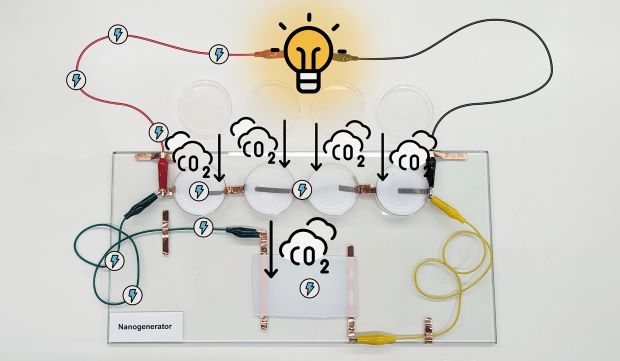An analysis of the effect role models have on students’ motivation in studying STEM subjects points to new ways to deploy these leaders in order to encourage learning across different populations.
Conclusions Provide Roadmap for Diversifying Science, Technology, Engineering, and Mathematics
An analysis of the effect role models have on students’ motivation in studying STEM subjects points to new ways to deploy these leaders in order to encourage learning across different populations. The recommendations provide a resource for parents, teachers, and policymakers seeking to maximize role models’ impact in diversifying the fields of science, technology, engineering, and mathematics.
“STEM fields fail to attract and retain women as well as racial and ethnic minorities in numbers proportional to their share of the population,” explains Andrei Cimpian, a professor in New York University’s Department of Psychology and the senior author of the paper, which appears in the International Journal of STEM Education. “A popular method to diversify the STEM workforce has been to introduce students to STEM role models, but less clear is how effective this approach is-simply because it’s not certain which role models resonate with different student populations.”
“Our recommendations, based on an analysis of over 50 studies, are aimed at ensuring that STEM role models are motivating for students of all backgrounds and demographics,” adds lead author Jessica Gladstone, an NYU postdoctoral fellow at the time of the study and now a researcher at Virginia Commonwealth University.
Marian Wright Edelman, founder and president emerita of the Children’s Defense Fund, popularized the phrase “You can’t be what you can’t see,” which emphasized the importance of having role models with whom diverse populations could identify.
While many have claimed that exposing students to role models is an effective tool for diversifying STEM fields, the evidence supporting this position is mixed. Moreover, the researchers note, the argument is a vague one, leaving open questions about under what conditions and for which populations role models can be useful for this purpose.
Gladstone and Cimpian sought to bring more clarity to this important issue by reframing the question being asked. Rather than asking “Are role models effective?”, they asked a more specific-and potentially more informative-question: “Which role models are effective for which students?”
In addressing it, they reviewed 55 studies on students’ STEM motivation as a function of several key features of role models-their perceived competence, their perceived similarity to students, and the perceived attainability of their success. They also examined how features of the students themselves, such as their gender, race/ethnicity, age, and identification with STEM, modulate the effectiveness of role models.
Based on this review, the duo extracted four recommendations designed to ensure that STEM role models are motivating for students of all backgrounds and demographics-an important step toward diversifying STEM (an infographic illustrating the recommendations may be downloaded from this link).
The four recommendations are as follows:
- Role models should be portrayed as being competent and successful.
“The preponderance of the evidence reviewed suggested that these features are motivating in a role model,” the authors write. “However, portraying extreme levels of role model competence or success can backfire, demotivating students. Although it may be tempting to make the role model seem like a superhero in terms of what they have achieved, more is not always better in this respect because students may conclude, ‘I could never do all that’ and look elsewhere for a career.”
Role models should be portrayed as being meaningfully similar to the students.
“Although the fact that a role model belongs to the same social group as they do may in and of itself be motivating to some students,” Gladstone and Cimpian observe, “the model’s motivational effects can be broadened by highlighting other ways in which the model is similar to students-for example, the model worked hard for their success, rather than being effortlessly brilliant, and the model likes to do ‘regular person’ things in their spare time. Asking students to reflect on similarities to the role model might help as well.”
- Prioritize exposure to role models who belong to groups that are traditionally underrepresented in STEM, especially in cases where only a small number of role models can be presented.
“Models from underrepresented groups are likely to have the broadest positive effects on students, regardless of students’ own social identities,” the authors note. “To avoid imposing an additional burden on scientists from underrepresented groups, they could be introduced to students via videos or printed materials-rather than live-because these materials can be presented to large numbers of students without any additional effort on the role model’s part and are at least as effective as live interactions.”
Role models’ success should be portrayed as attainable.
“To the fullest extent possible, information should accompany the exposure to the role model that makes it clear how the students could also achieve what the model has achieved,” Gladstone and Cimpian advocate. “Perhaps the greatest risk of demotivating students arises when a role model’s career success seems unattainable to students.”
The work was supported by an Inclusive Mathematics Environments Early Career Fellowship from the Mindset Scholars Network (now the Student Experience Research Network), with the support of the Bill & Melinda Gates Foundation.








